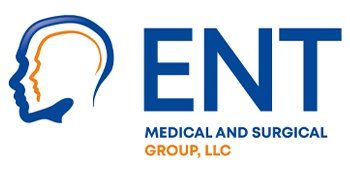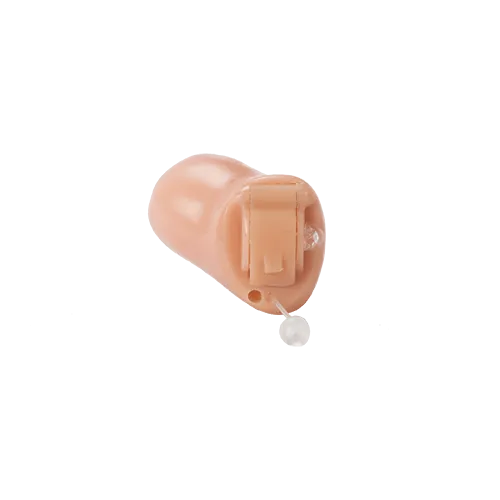Audiology and Hearing Aids
Audiology focuses on the diagnosis and treatment of your hearing health. Our practice is committed to giving you the information, testing, and recommendations you deserve to live a fuller life through better hearing. Our certified audiologists are trained in the latest technologies and specialize in creating custom hearing solutions based on your specific needs and lifestyle.
Hearing Aids
From larger devices that are easier to handle, to tiny, invisible, or nearly invisible devices that are concealed within the ear canal, Ear Nose & Throat Medical and Surgical Group has options sure to meet your hearing or cosmetic needs.
Today’s hearing aids come in a variety of shapes and styles — and are now more comfortable and easy to use than ever before. Most all of our hearing aids are available in the full range of fitting styles you’ll see below.
All hearing aids consist of three basic components: a microphone, an amplifier, and a speaker (also called the “receiver”). Where these are placed on the device varies by style, as does the internal circuitry that determines the sound quality and critical sound-processing features — like background noise reduction.
Invisible-In-The-Canal
(IIC)
For mild to moderately severe hearing loss
- Completely invisible in most ears
- Custom-made for you
- Smallest, least visible type of hearing device.
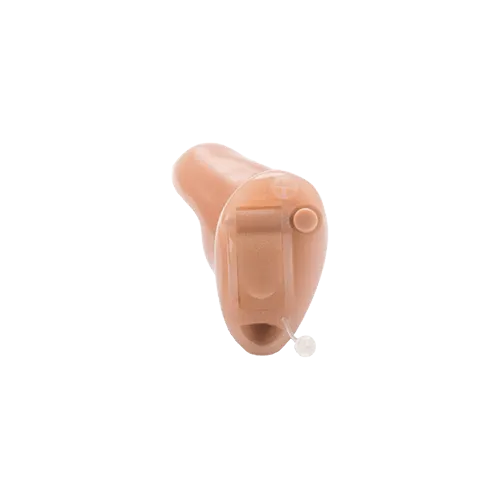
Completely In-the-Canal
(CIC)
For people with mild to severe hearing loss.
- Molded to fit deeply within the ear canal.
- Placement within the ear cuts down on wind noise.
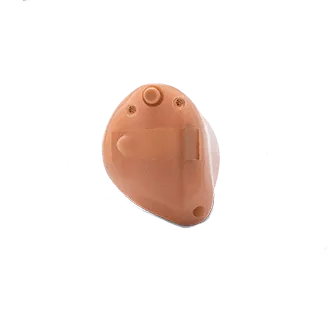
In-the-Canal
(ITC)
For people with mild to severe hearing loss.
- Fits in the ear canal.
- Barely visible.
- Smallest size available with directional technology to hear better in noise.
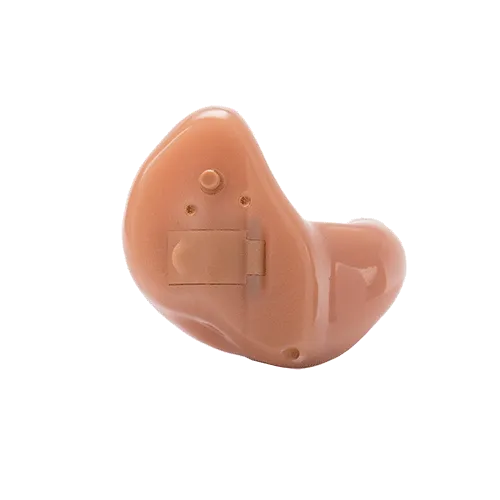
In-The-Ear
(ITE)
For people with mild to severe hearing loss.
- Fits directly into external ear.
- Inserted and adjusted with ease.
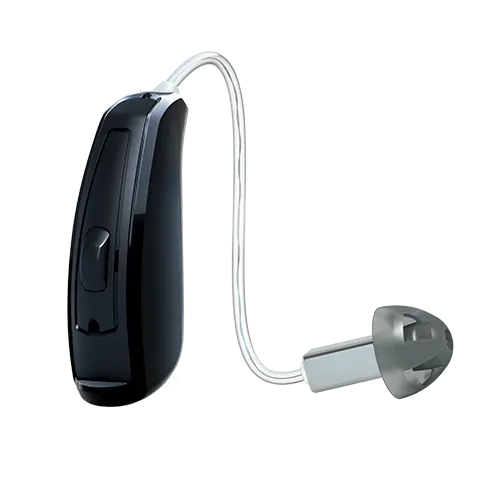
Receiver-In-The-Canal
(RIC)
For mild to moderately severe hearing loss
- May leave the ear open depending on the hearing loss.
- Reduced or no “plugged up” feeling.
- Sleek design barely visible when worn.

Behind-The-Ear
(BTE)
Appropriate for almost all types of hearing loss
- Custom earpiece is molded to fit your outer ear.
- Discreet design.
Hearing Care Services
Our expert staff of audiologists provide services to those from newborn to over a hundred years old. These include basic behavioral tests and sophisticated computerized otoneurological evaluations. When appropriate, the latest digital hearing instruments may be utilized to help compensate for a hearing impairment.
Diagnostic Hearing Tests
Repeated exposure to loud noises, like the 140-decibel blast of a rifle or the 130-decibel roar of a jet taking off, can cause irreparably damage to the hair cells of the inner ear – those cells that enable one to hear. Hearing loss caused by loud noises can be prevented through the use of custom-made earplugs.
The Effects of Hearing Loss and Sound Voids™ can be minimized if:
- Your problem is correctly diagnosed;
- You receive the right type of treatment; and
- You and your hearing care team are committed to solving the problem
Hearing Aid Dispensing
Audiologists are certified and licensed to not only dispense and fit hearing aids, but are also trained to diagnose and treat hearing and balance disorders. They have had several years of advanced education and have obtained a Master’s Degree or Doctoral Degree in Audiology (Au.D./Ph.D).
What Is Tinnitus?
Tinnitus is a medical condition characterized by persistent ringing in one or both ears that can only be heard by the affected individual. It has also been described as whistling, hissing, buzzing, or pulsing in the ear. These sounds may come and go, but for most tinnitus sufferers, the symptoms produce a constant, maddening drone. The effects range from slight annoyance to severe disruption of everyday life. The American Tinnitus Association estimates that more than 50 million Americans suffer from tinnitus.
Due to the personal and unique nature of each tinnitus condition, proper evaluation and specialized treatment is necessary. Although there isn’t a single cure for tinnitus, Ear Nose & Throat Medical and Surgical Group audiologists are experienced at providing individual solutions on a case-by-case basis. After completing a hearing test, your professional may refer you to an otolaryngologist for further examination, if medical treatment is necessary.
In many cases, the distressing combination of tinnitus and hearing loss can be relieved with hearing aids. Specially engineered hearing aids are now available, and they can restore ambient sounds and help fill Sound Voids™ to eliminate the effects of tinnitus.
Our audiologists will also evaluate other treatment options with you, including Tinnitus Retraining Therapy (TRT). TRT combines low-level, steady background sounds played through a device with concurrent counseling. It is an involved process that can take several months to reduce the effects of tinnitus. If you are experiencing the symptoms of tinnitus, please visit us for a consultation.
Balance & Dizziness Testing
Dizziness or loss of balance is the second most common complaint heard in doctors’ offices. National Institute of Health statistics indicate dizziness will occur in 70 percent of the nation’s population at some point in their lives. Acute or chronic problems with equilibrium may indicate serious health risks or limit a person’s everyday living.
Our equilibrium is a complex interaction that requires solid communication between our ears, eyes, and sense of touch as perceived by our feet, muscles, and joints. In order to maintain our center of gravity, our central nervous system must receive all three of these signals and then correctly transmit them to the cerebellum.
When signals from our senses fail to reach the cerebellum, or reach it with the wrong message, we experience that miscommunication as a loss of balance, a dizzy spell, or—if we’re exceptionally unlucky—a stumble or fall.
A balance disorder can sometimes be a symptom of other medical conditions. Proper medical attention, including a thorough medical history and assessment of the balance system is important to identify the cause and ensure proper treatment options.
Dizziness can be caused by:
- Infections of the middle ear
- Allergies
- Benign Paroxysmal Positional Vertigo (BPPV) – displacement of otoconia (crystals) from the balance organ of the inner ear
- Vestibular neuronitis – inflammation of the vestibular nerve
- Larbyrinthis – virus of the inner ear
- Meniere’s disease – fluid buildup in the inner ear
- Neck problems
- Central problem
- And more…
Balance Assessment
If you experience balance problems or dizziness, we will complete a thorough evaluation. Our balance lab can perform a series of tests to assist in diagnosis and treatment of your problem.
Balance Treatments
If your assessment shows that you do have a balance problem, your doctor may recommend one of several treatments or balance therapies to help you get back on your feet.
Canalith Repositioning
Many cases of vertigo can be resolved with a simple in-office positioning procedure. A Canalith Repositioning Maneuver is treatment that takes the patient through a series of head and body positions designed to put loosened otoconia debris (crystals) back onto the balance organ.
Diet and Lifestyle Changes
Caffeine, salt, alcohol, nicotine, and dehydration can all have a considerable impact on your sense of balance. When you visit us at Ear Nose & Throat Medical and Surgical Group, we will conduct a full review of your prescription medications, diet, and daily habits to determine whether your balance issues can be controlled at home.
If you or a loved one is experiencing dizziness or balance problems, please call one of our convenient locations to set up an appointment. We look forward to serving you.
Hearing Care Resources
We have compiled the following information to help you and your loved ones understand the importance of hearing in all of our lives and provide you with some answers to your hearing related questions. Please review the information in these links and feel free to contact us if you have any further questions.
Communication Tips
Better hearing requires more than simply hearing aids. Better communication strategies can smooth the period of adjustment required when individuals start wearing hearing aids, and can help reassure both the person with hearing loss and their family members or loved ones that they’re being understood clearly.
If you suspect or know that the person you are speaking with has a hearing loss, please consider the following tips to enhance communication:
- Sit or stand within 3 to 6 feet to maximize audibility.
- Remain at eye level to foster visual cues.
- Gain the person’s attention before speaking.
- Use facial expressions and gestures to give clues to the meaning of your message.
- Raise your voice but do not shout, because loud speech may sound distorted.
- Speak slowly and distinctly.
- Use short, simple sentences.
- Rephrase your words if the person does not appear to understand or responds inappropriately.
- Avoid speaking directly into the person’s ear, because it can distort your message and hide all visual cues.
If you or someone you care about remains uncertain if they are experiencing a treatable level of hearing loss, contact us to schedule a complete hearing consultation.

